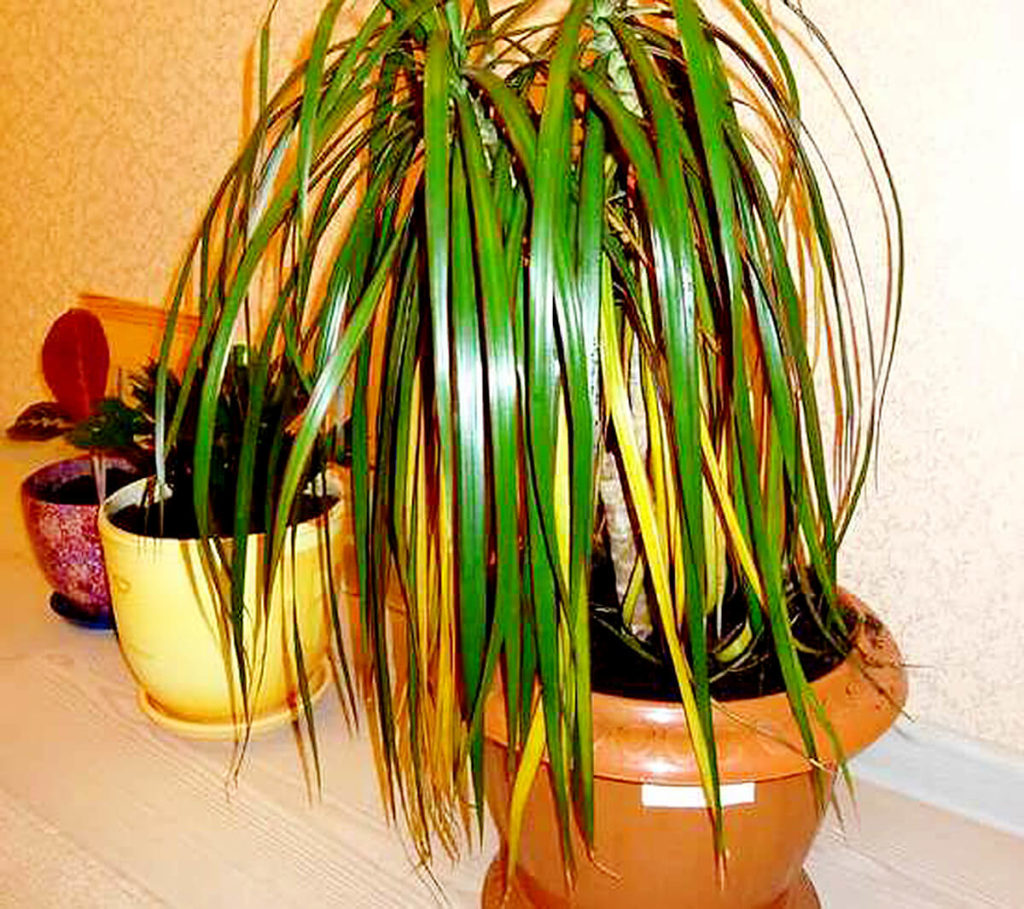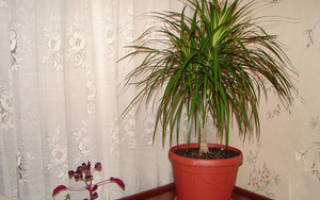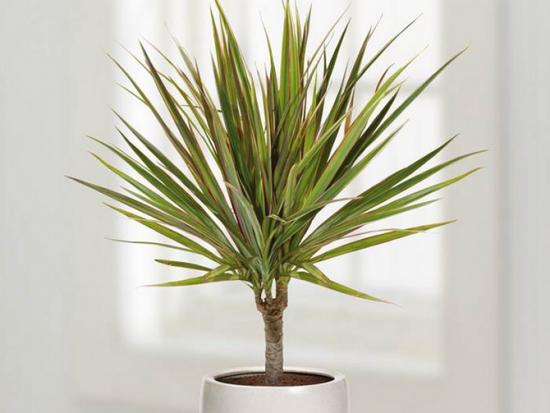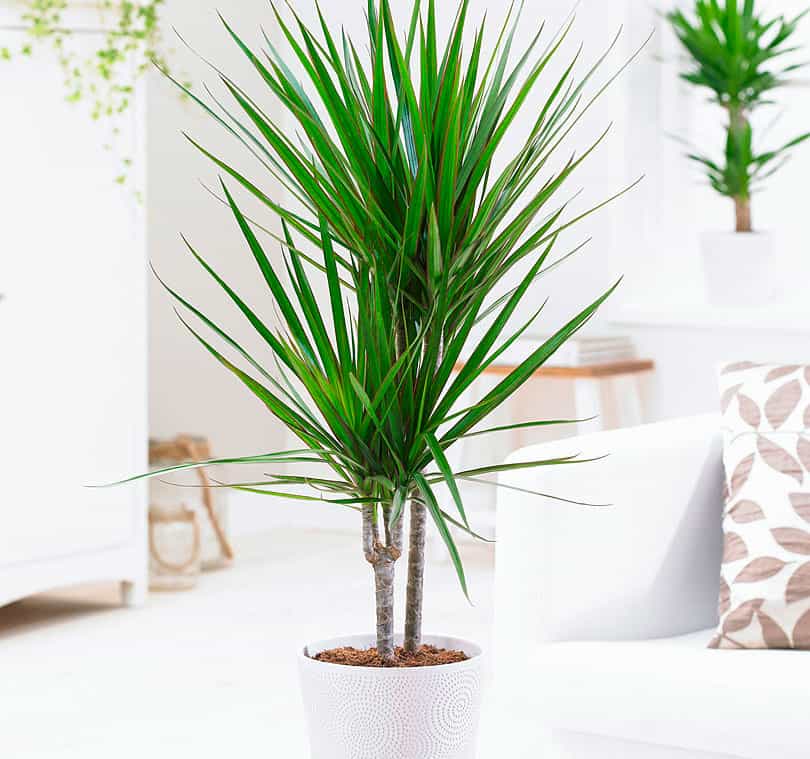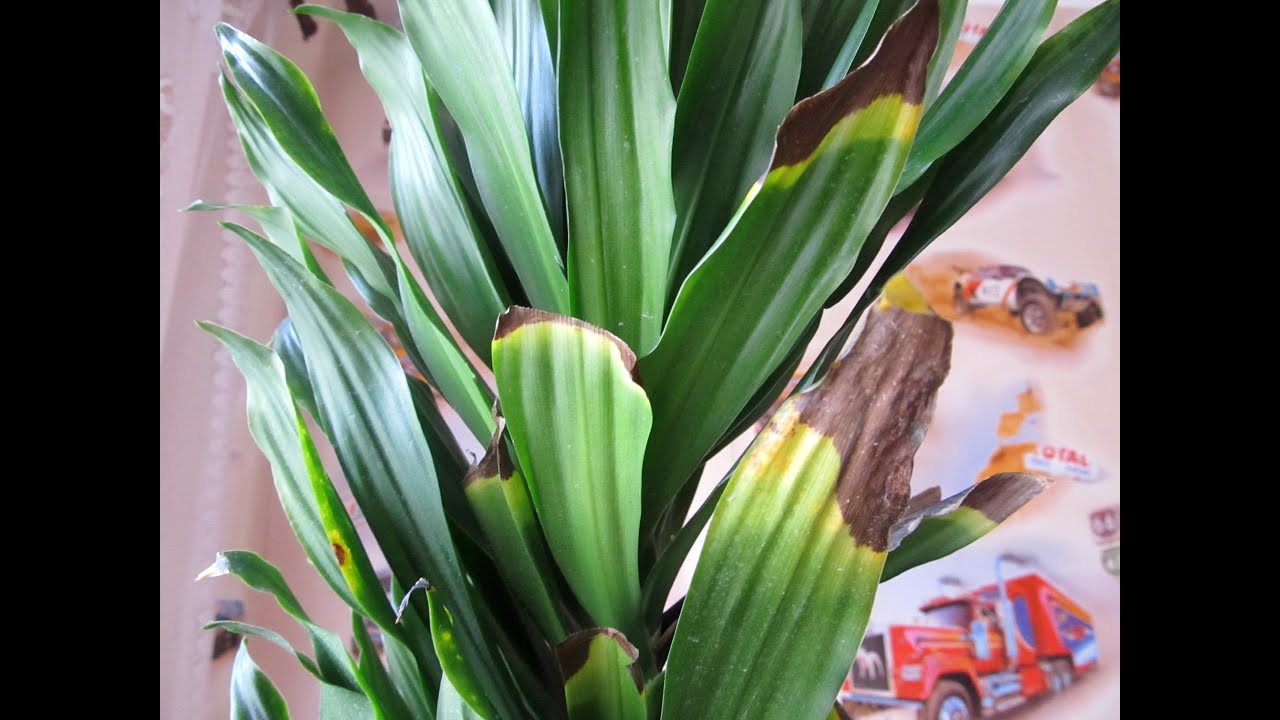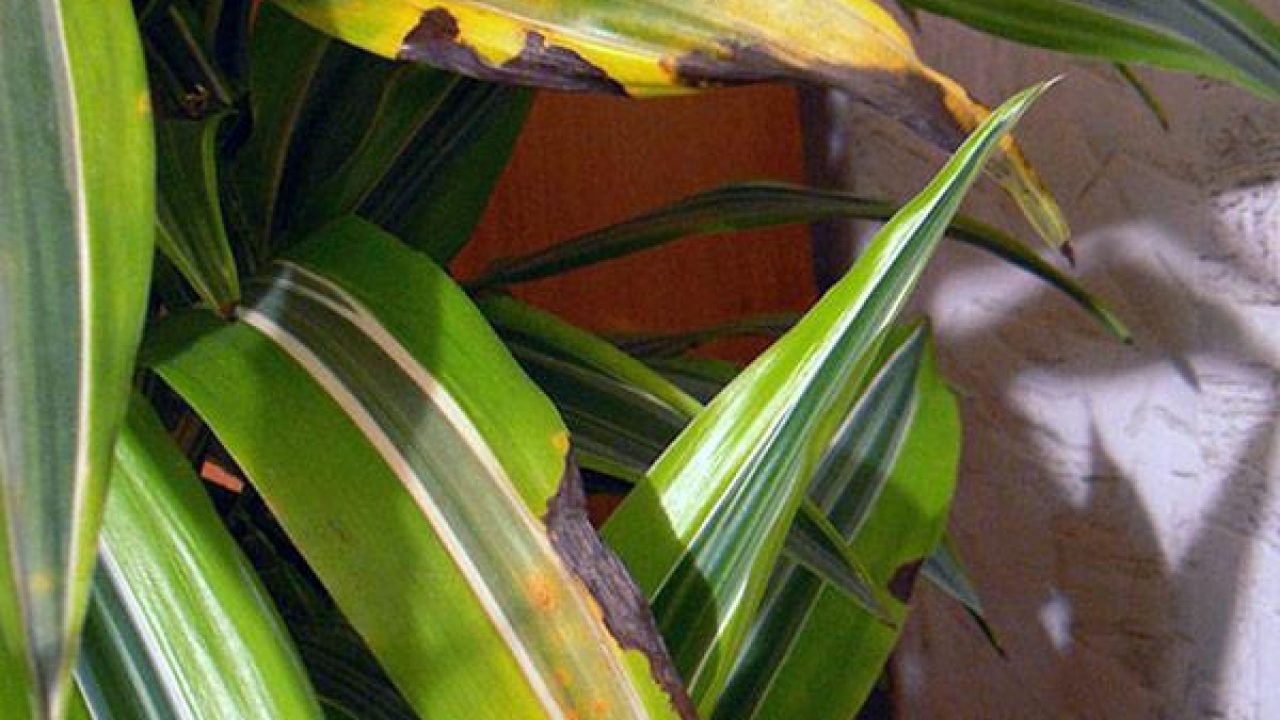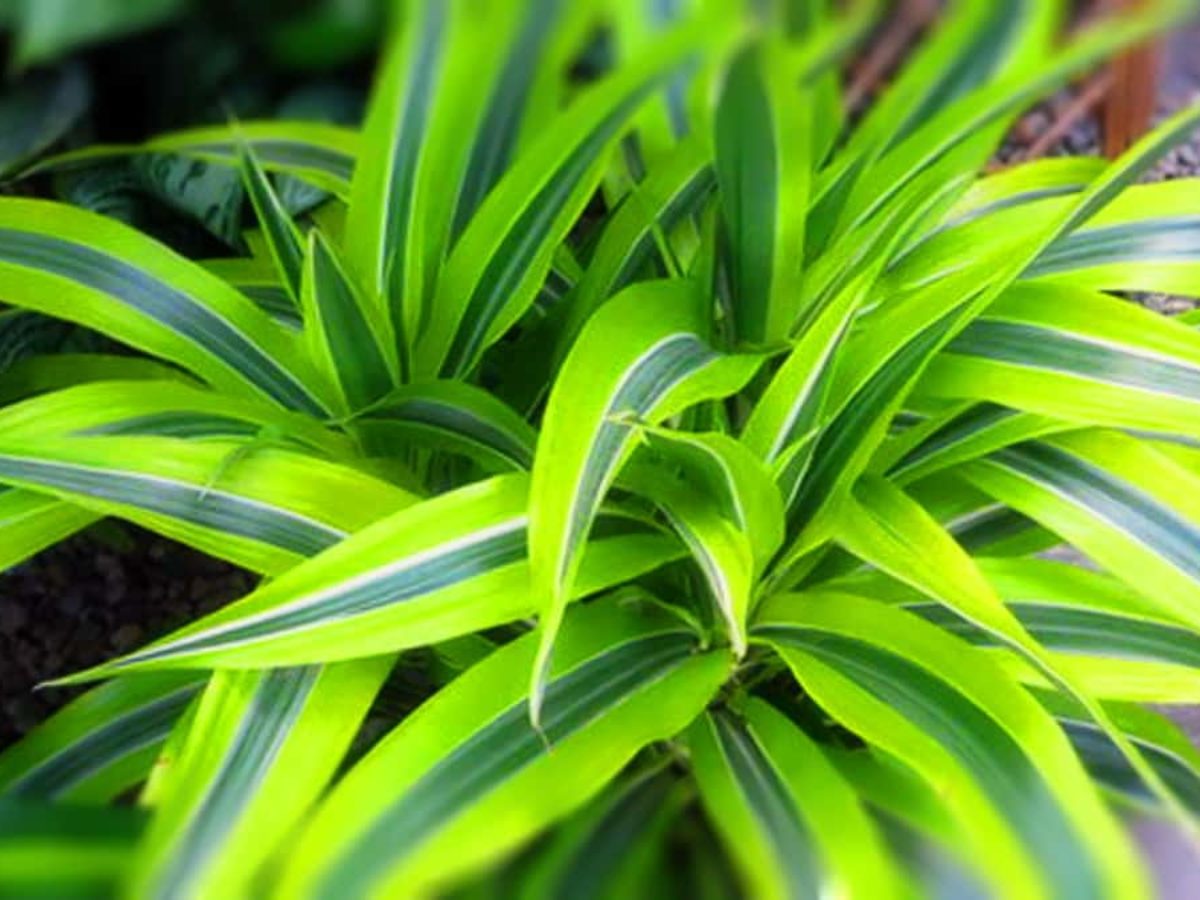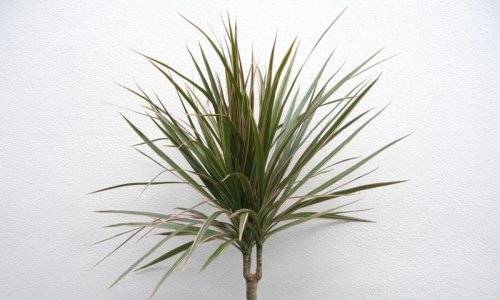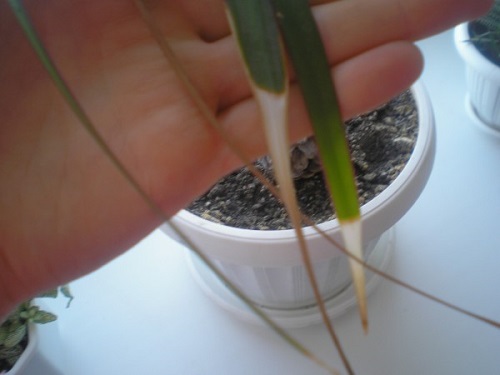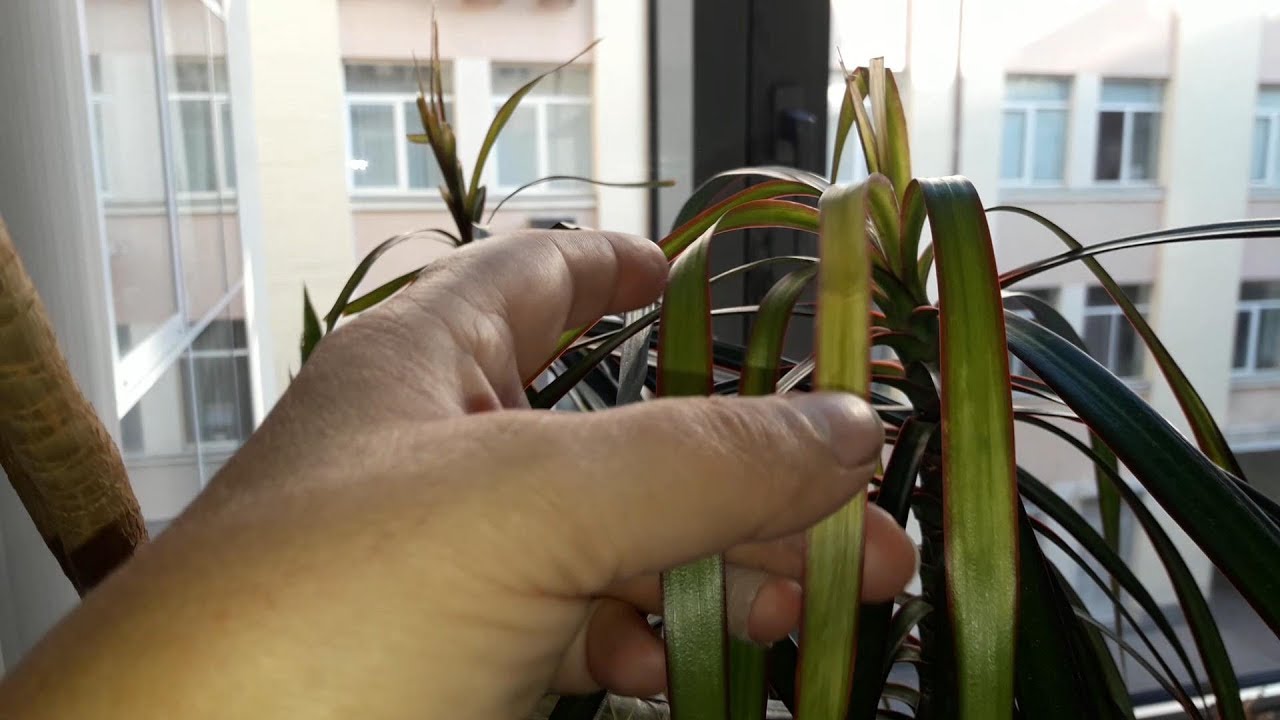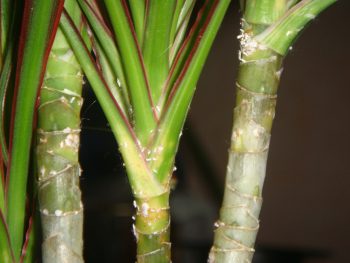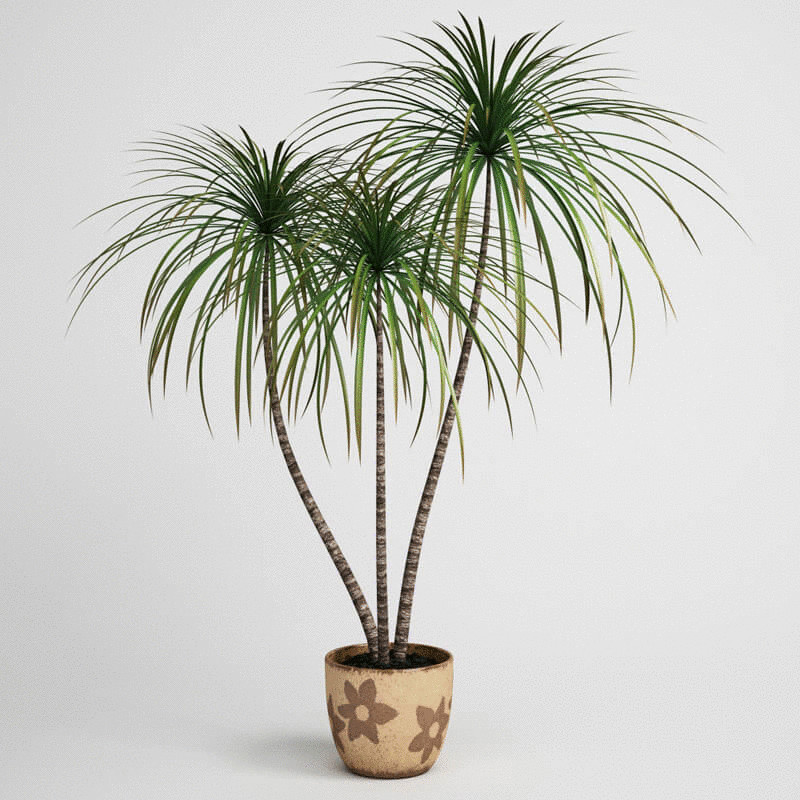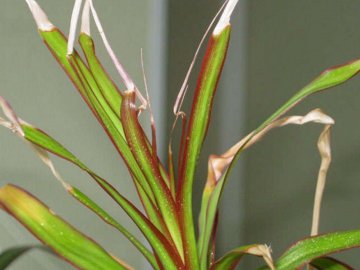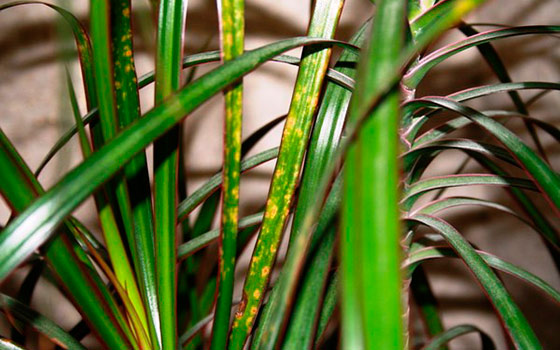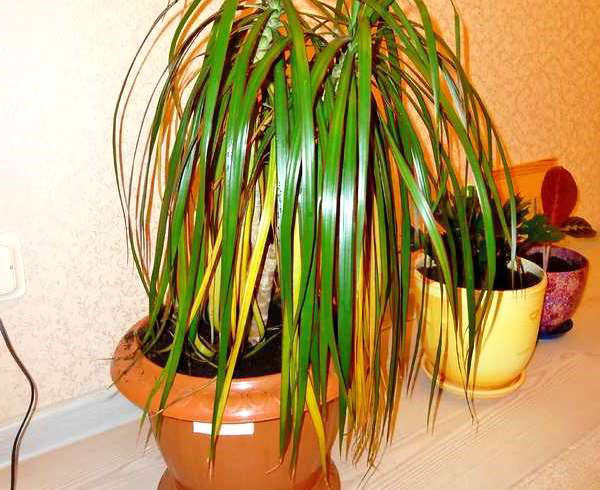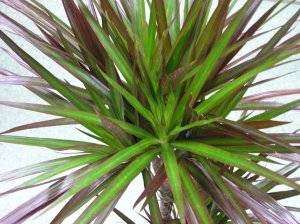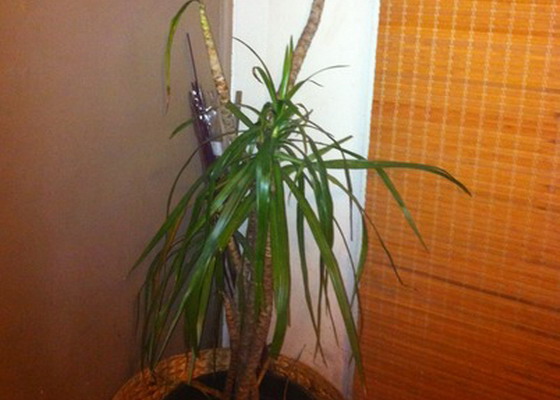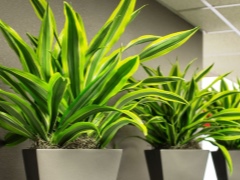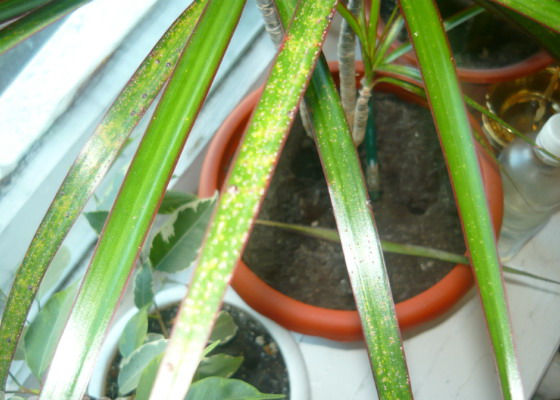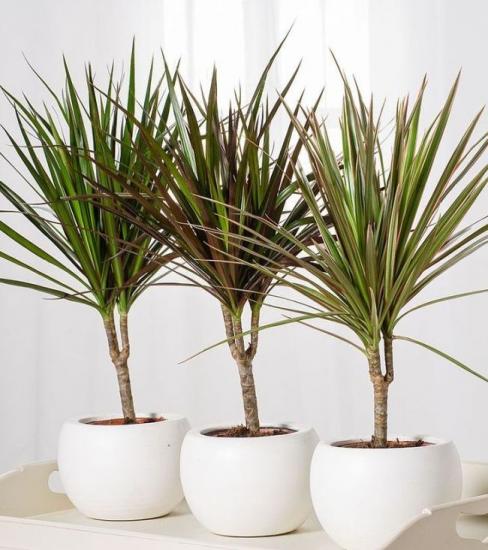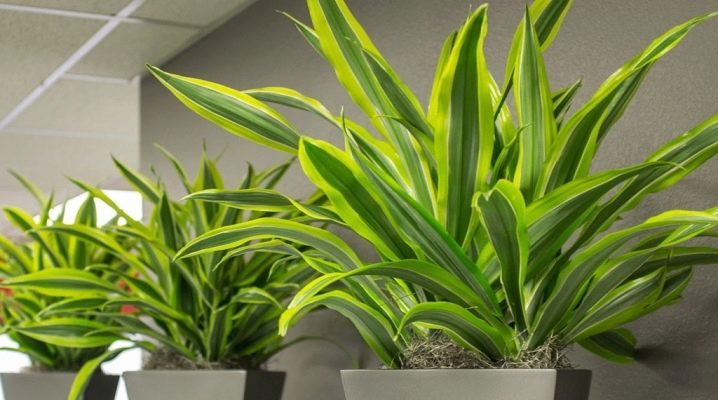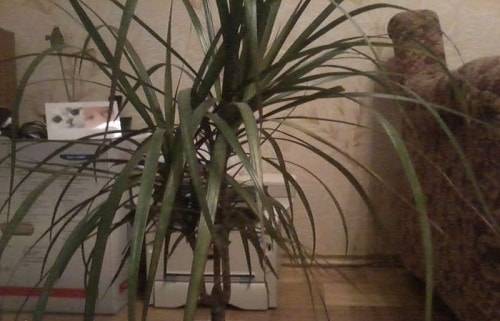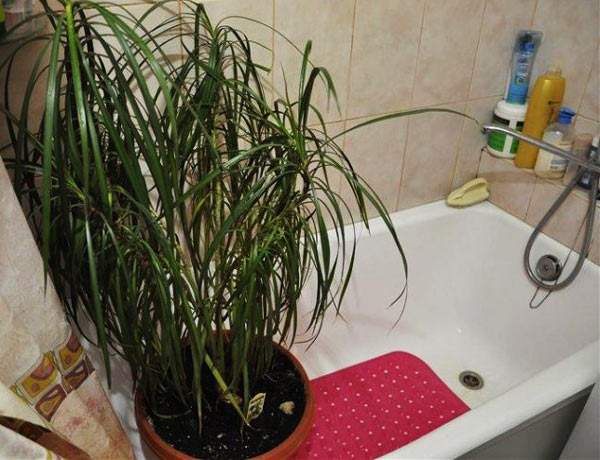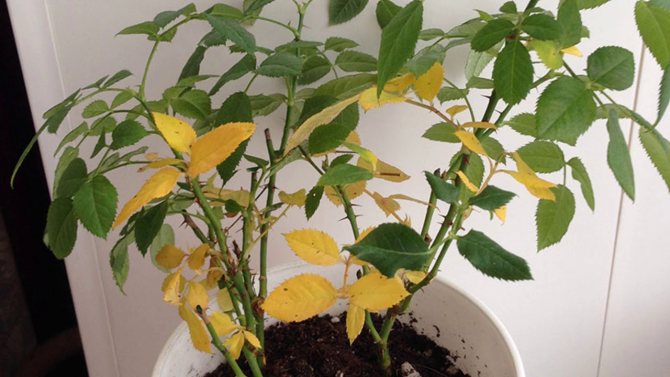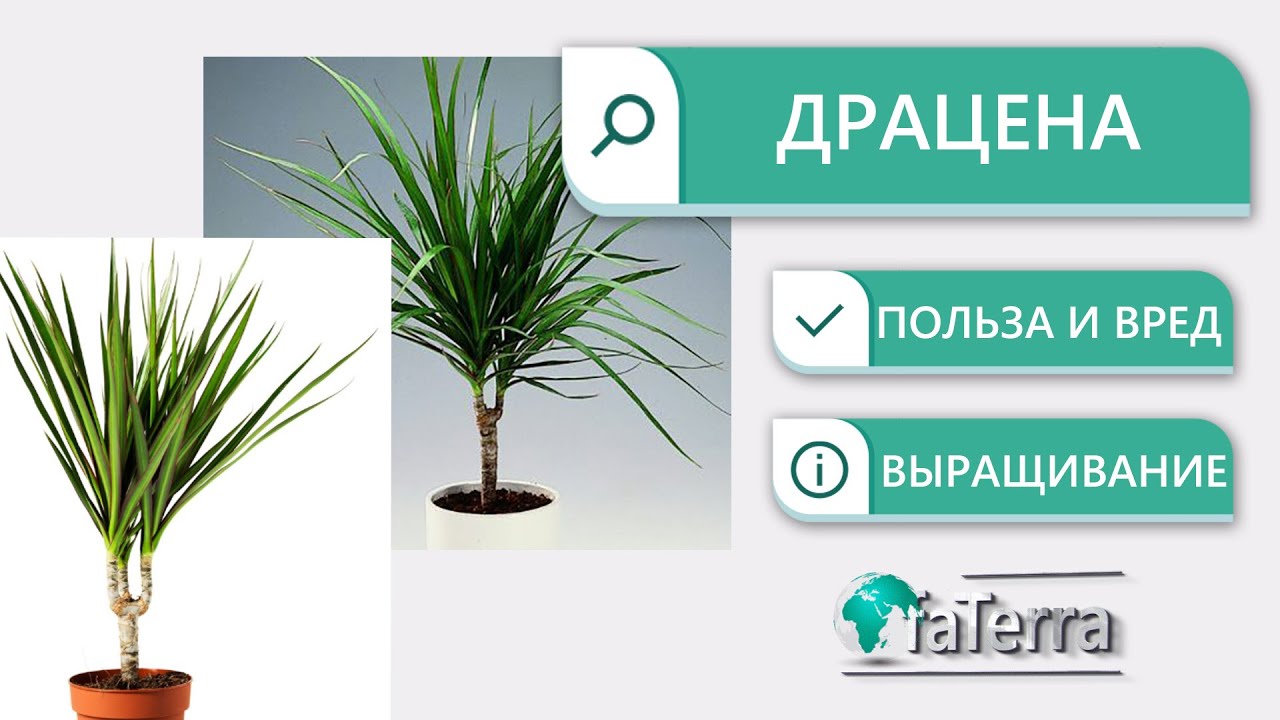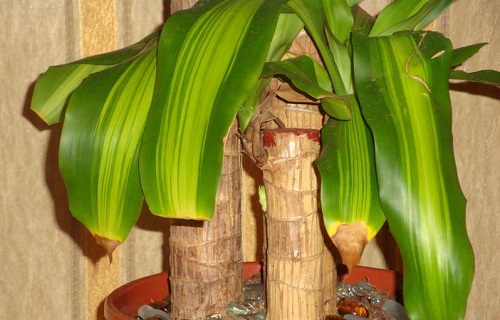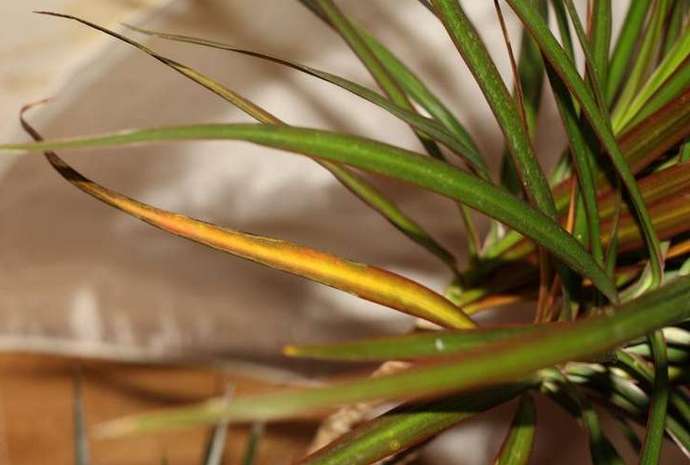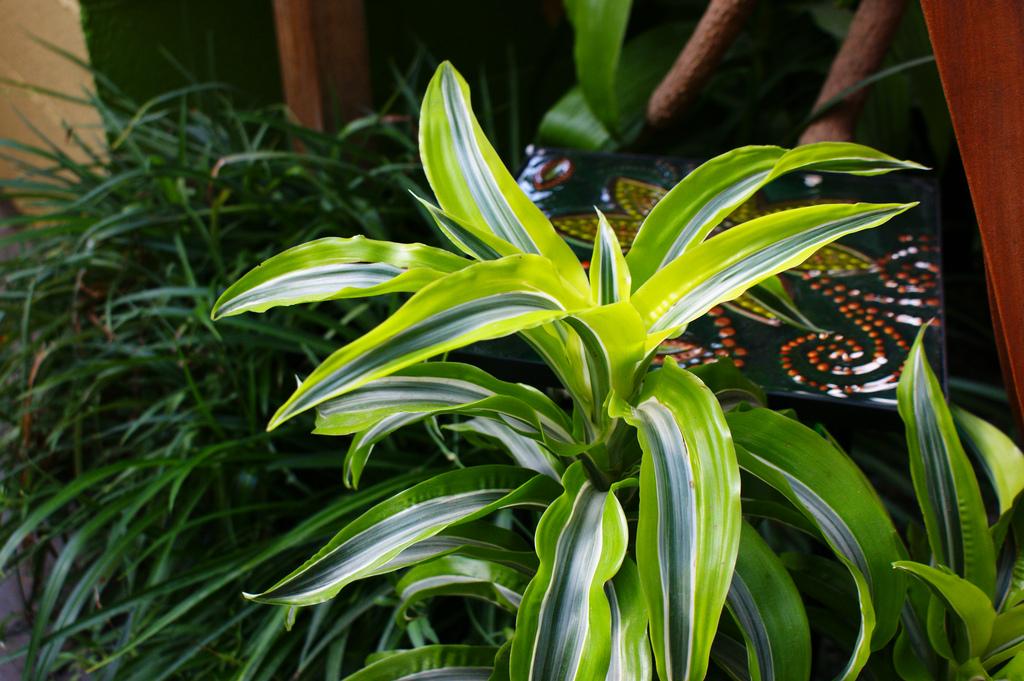Dracaena leaves turn yellow and fall - what could be the reasons

Dracaena is a beautiful tropical plant, unpretentious in care
Dracaena has another name - "palm" due to its unusual exotic appearance. She often becomes an interior decoration. But sometimes owners may be faced with a situation where the leaves of the plant begin to turn yellow. There may be several reasons, ranging from damage by pests to natural aging of the plant. Often, even with high-quality and proper care, the problem cannot be avoided.
The most common reasons why dracaena leaves turn yellow are:
Physiological aging of the plant. The lower leaves of the flower begin to turn yellow and die off - this is considered a normal process. If the plant has a tall, elongated stem, the main stem should be cut off so that new stems can grow.
A lot of moisture. Improper watering can cause yellowness on the leaves. Too moist soil, improperly organized drainage lead to the development of rot, because of this, the plant's immunity weakens. To fix the problem, you need to water the plant once a week. This will help improve its condition and color.
Insufficient watering. This factor also has a significant effect on the condition of the leaves of the plant. It is a tropical flower that thrives in humid conditions. Dry air in an apartment has a negative effect on it. The problem is especially aggravated in winter, when the heating is turned on in the apartments. The plant needs regular spraying, in winter you need to carry out this procedure daily. Next to the pot in which the dracaena grows, you can put a container with water. This will help increase the humidity in the room.
Direct sunlight. They are harmful to the plant as they can cause burns.
It is important that the place for the pot is chosen correctly. Dracaena really needs daylight, but at the same time it must be protected from the sun.
Lack of light
If the plant stands in a place where there is low light, the leaves begin to turn yellow from below, then fall off. Sometimes the phenomenon is observed if light hits only half of the plant. Therefore, it is recommended to turn the pot regularly.
Defeat by the virus. In this case, yellowing will be the first sign. In addition, deformation of the foliage and stem will begin. Infections are highly contagious and can infect all plants in the home.
Flower attack by pests. Yellowing of the leaves can be caused by parasites such as spider mites, scale insects, thrips. In addition to the yellowness of the leaves, additional symptoms appear in the form of brown spots on the stems and thin white stripes on the leaves. Pests suck out the juice from the plant, because of this, the weakened leaves begin to turn yellow and fall off.
Important! The yellowness of the leaves does not always indicate the development of pathology. For indoor plants, this is a natural process that is necessary for foliage renewal.
Only massive cases of yellowing should be of concern. This suggests that the plant is sick.

One of the reasons for the yellowing of the leaves may be an attack of the flower by parasites.
Pests
Due to harmful insects, dracaena can get sick and drop leaves. It is necessary to eliminate parasites immediately after detection. The most common pests are scale insects, spider mites, aphids, mealybugs.
Shield
The presence of the pest is indicated by rounded brown plaques 1-3 mm in diameter, covering all parts of the plant. They are used by the pest as a shelter.
The leaves will acquire a yellow-red hue, begin to fall, dry out and die off. The insect itself can be removed by hand with a sponge soaked in soapy water.
Attention! The most effective method of struggle is to carry out treatment with Aktara 2 times with an interval of a week.
Spider mite
This small insect 0.5 mm in size is yellow-green in color. It is very difficult to see it. The mite settles on the inside of the leaf, where white spots will appear over time.
The damaged areas will be covered with cobweb-like formations. Leaves may turn yellow and darken.
Dracaena treatment consists of treatment with a soap solution heated to +50 ° C and spraying with Actellik or Fitoverm. Spraying is carried out only after the bush has dried.
Aphid
Small pests severely damage the upper parts of the shoots and the lower parts of the plates, sucking out cell sap from them. Infected leaves lose color, turn yellow and fall off. Timely treatment will help prevent the death of the plant.
To combat these pests, insecticides are used. The flower is treated with Antitlin or Biotlin every 5 days until complete recovery.
Mealybug
The pest infects leaf plates and leaf axils. A waxy discharge similar to cotton wool can be seen on infected areas. The flower will have growth and development delays. The bush is treated by spraying with soapy water. After that, it is treated 3 times with a solution of Aktar or Mospilan with an interval of 5-7 days. It is also worth updating the soil and making a transplant.

Dracaena infected with mealybug
Dragon in our house
In nature, dracaena can reach ten meters in height. At home, of course, you can't grow such giants. But certain species grow up to two to three meters. Therefore, the determining factor in choosing is the place planned for the flower.
If we classify the plant by "growth", then for our pleasure giant, medium and dwarf dracaena are bred. All natural species could not be domesticated. Therefore, you will have to choose among ten to fifteen varieties.
The most unpretentious dracaena are Dragon, Bordered, Fragrant, Godsefa. They can withstand low winter temperatures, shaded corners. But dracaena do not like sharp temperature changes. Watering should be moderate as the topsoil dries up. Periodically, the plant needs to be sprayed with water using a spray bottle. Dracaena is fertilized during the growth period, from April to August.
If you adhere to agricultural technology, the plant gives abundant foliage of a rich shade. But there are bloopers in leaving.
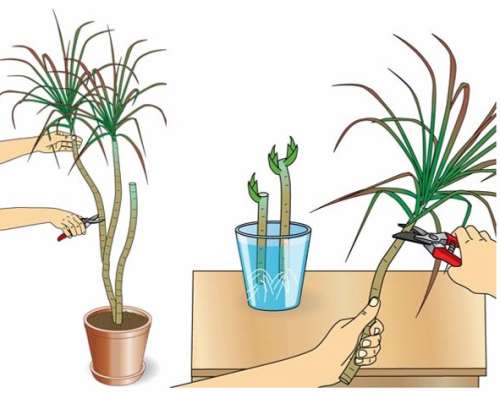
Causes of unplanned leaf fall
Why do dracaena leaves turn yellow and fall?
1) Natural causes.
A plant leaf cannot live forever. He is born, develops and grows, grows old and dies. This natural process explains the yellowness of the leaves on the trees.
Dracaena leaves live for about two to three years. And then they start to turn yellow. At the bottom of the crown, one or two. This phenomenon is not massive and abnormal. It is natural, and therefore does not require any measures.
2) Dryness of the ambient air.
When the leaves of a plant look weak and lifeless, turn yellow throughout the crown and fall off, then perhaps the dracaena suffers from excessive dryness of the air.
What to do?
- Place the flower pot in wet gravel, poured into a deep tray.
- Spray dracaena with filtered or settled water at room temperature twice a week.
- Install a humidifier in the room.
3) Wrong location.
Dracaena does not like drafts and direct sunlight. From the first, the leaves of the plant turn brown and dry at the edges. From the second, dry spots appear on the leaves.
When temperatures are too low or too high, the dragon leaves become soft and curl. If the leaves curl up into a tube, then you have frozen your flower. Dropping green leaves indicates frostbite of an earthen coma.
What to do?
Choose a place for your plant that is far from batteries, drafts, open doors and vents. Fairly light, but no direct rays. If the leaves are frosty, sprinkle generously with warm water. Only cuttings will save from freezing and rotting of the roots.
4) Excessive watering of the plant.
Pouring dracaena can lead to root rot. Then the leaves fall in large quantities: up to eight pieces a week. The bark of the plant wrinkles, the trunk becomes soft. Young leaves do not have time to grow - and immediately rot. The edges of old leaves turn yellow quickly.
What to do?
In such a situation, only cuttings help. To do this, cut off the top and root it in water or earth. New roots will appear no earlier than two months later. Before their formation, the young plant will feed the remaining leaves.
5) Infection with parasites.
Dracaena can be affected by various pests. Where do they come from? From contaminated soil, from another plant. Many of them deprive the leaves of juices, which is why yellowing occurs.
To detect pests, pluck a yellowed leaf, carefully examine the sinus for lesions. Preferably with a magnifying glass. Look at the whole flower. The presence of a thin cobweb, sticky secretions, whitish or brown dots, "cotton wool", "flour" indicates a defeat.
What to do?
Remove all yellowed leaves. Cut off heavily affected areas. Treat the plant with an insecticide. After a while - re-treatment with laundry soap. The procedure is repeated several times until the symptoms disappear completely. And two or three more times - control.
By responding to the problem in a timely manner, you can save the plant.
Diseases
The reason may be too dry air, too low temperature or sudden changes in the environment. If you move the dracaena, for example, from a cool street to a warm apartment, this can lead to cracking of the edges of its leaves. Also, do not expose the plant to temperature fluctuations. The yellowing of the leaf blade is guaranteed.
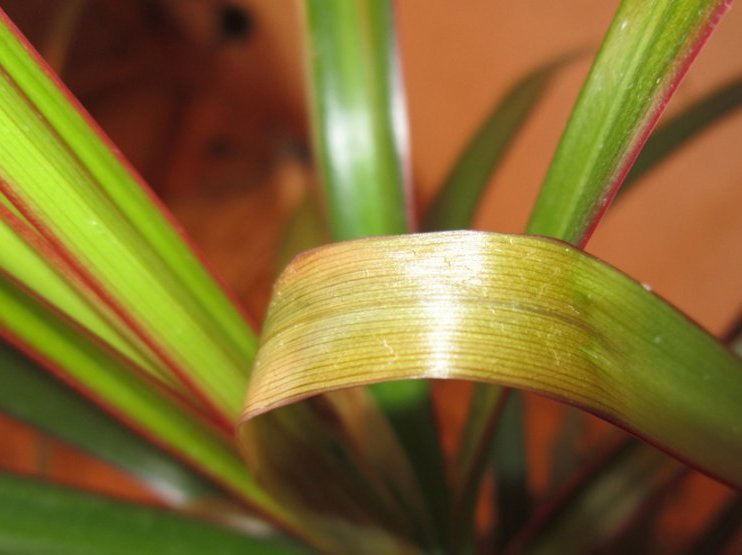
Yellow leaves are one of the symptoms of the disease.
Dracaena disease can also result from excessive sun exposure, resulting in leaf burns. In turn, too little light can lead to fading and weaker coloration found in some varieties. Slowdown in growth, transparency of leaves, as well as their yellowing and dropping are possible consequences of improper reproduction of dracaena.
Most often, the flower is affected by infectious diseases. They are transmitted from neighboring plants and brought in with tools while loosening the soil. If you ignore the yellowing of the foliage and do not take action, then soon the dracaena will die.
Important! Infection can be brought into the house with other indoor plants from the store or market, as well as with garden raw tools.
Bacterial infection
A bacterial infection on dracaena manifests itself in dark brown, rapidly growing spots on the tips of the leaves. Sometimes the stem also turns black at the base and the rot moves to the petioles. Unpleasant odor may result. For mild infections, remove diseased leaves and spray the plant and substrate with a growth stimulant that reduces the development of pinpoint disease. Unfortunately, with a neglected disease, it is no longer possible to save the plant.
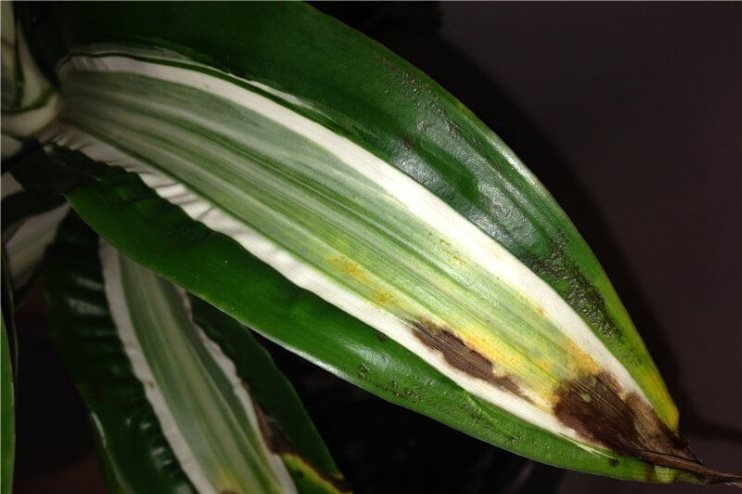
Bacteria infect the tips of the leaves
Fungal infection
May be bacterial or fungal based. Dracaena leaves appear yellow, brown, irregular spots ranging in size from 1 to 5 mm with a red border. Above them are black clusters of fungal spores.
It is important to remove the affected leaves and stop spraying the plant. To preserve dracaena, a series of biological products and fungicides should be used.

Fungal disease
Note! To prevent fusarium spotting, the same preventive measures must be taken. With this disease, rotting of the leaf rosettes is observed, and small watery spots with a light yellow border appear on the leaf plates.
Mold in the soil
Mold in soil damages most indoor plants. Poor soil quality, lack of light, high humidity of the air and soil, and excessive watering contribute to its appearance. If mold is found in the spring, it will be advisable to transplant the plant into fresh soil with a loose substrate, preferably with a drainage layer.

This is what mold looks like in the ground
Pests
If you do not properly care for a tropical flower, it can be attacked by parasites. They begin to suck the juices from the leaves, later the dracaena can fall off and completely die.
The following types of pests are dangerous for dracaena:
- Thrips. One of the most dangerous parasites that attack indoor flowers. It settles from below on the leaves, and feeds on cell sap. The yellowing of the foliage is due to the fact that the female parasites gnaw through the foliage tissue. This provokes her fall. Thrips reproduce actively at high indoor temperatures. To get rid of the problem, you can spray with soapy water. After the procedure, the flower must be covered with polyethylene. The preparations "Iskra" and "Fitoverm" help to destroy parasites well.
- Shield. A common parasite on indoor flowers. It got its name from a small flap on the back (this is a protective layer). The female is able to lay a large number of larvae, which tightly attach to the surface of the leaves, and suck out the juice. Affected dracaena stops growing, its leaves turn yellow. Processing should be carried out with methyl alcohol. It is gently applied with a sponge to the affected areas. As soon as the pests are weakened by the action of the drug, they are removed completely with the help of the drug "Inta-SM", "Aktara". The yellow leaves are completely removed.
- Mealy bugs. This is an insect covered with white bloom on top. Thanks to this, it is very clearly visible on the leaves. When infected, the flower stops developing. On the surface of the leaves, white waxy traces are formed from the movement of the parasite. They can be removed with a toothbrush and soapy water. With a strong degree of damage, the preparations "Fitoverm" or "Akhtar" are used.
It is important to pay attention! If the plant has been treated with chemicals, you need to remove the topsoil and replace it with a new one.

Most often, the owners of dracaena are faced with damage to the scabbard.
Bacterial burn
Outwardly, it is very similar to the sun, but occurs with high humidity, which is why the leaves of adenium turn yellow.
Treatment consists of stopping spraying, collecting diseased leaves, treating with a weak antiseptic solution, and procedures to improve the soil. You can process it with a weak solution of potassium permanganate, avoiding contact with flowers and soil.
Soil rehabilitation procedures include treatment with special fertilizers and soil treatment with bactericidal agents. It is better not to use the latter, since there is a risk of destroying the microflora in the soil, which will lead to the appearance of other infections and damage to the root system.
Fertilizer "Baikal-EM", which is a concentrate of dormant beneficial microorganisms, is well suited for recovery. When applied, useful substances are produced, the smell of mold from the ground disappears, the growth and development of adenium is accelerated.
The instructions should be strictly adhered to, since in case of an overdose there is a risk of burning the roots.
Soil moisture
Dracaena is a plant that came to Russia from countries where drought alternates with heavy rains.This led to the fact that the plant acquired special properties that make the flower resistant to irregular watering. However, these changes that nature has given the flower become a huge disadvantage when the plant is in a constantly humid environment.

Proper watering will be a good prevention of yellowing of foliage.
The best way to water this plant is by the immersion method:
- Partially fill a sink or large container with water.
- Place the pot. The water should reach the level of the soil in the pot.
- Soak the pot with dracaena in water for 7-10 minutes.
- Lift the pot and place it on the wire rack so that any excess water can drain off.
- When dripping has stopped, return the plant to its place.
You can water with water next time only when the soil is completely dry. To check, you should deepen your finger 5-8 cm. It should be dusty and dry. If there is even a little moisture left, do not water
It is important to periodically loosen the substrate. This will saturate it with oxygen and become a good prevention against diseases.
Note! Experienced flower growers assure that the dracaena needs to be watered every 5-7 days. Dracaena is at rest in winter.
At this time, the same rules apply as above, except that it may take up to a month for the soil to dry after a previous watering. You can water every 15-30 days. No need to moisten the soil weekly
In winter, the dracaena is at rest. At this time, the same rules apply as above, except that it may take up to a month for the soil to dry after a previous watering. You can water every 15-30 days. You don't need to wet the soil weekly.
Leaves and other problems fall off, dry
Yellowness and leaf fall are not the only problems that this type of plant may have. In addition to these phenomena, there are a huge number of them. Let's analyze the most common ones:
- the tips of the leaves of the plant may turn black;
- folding leaves into a tube;
- the plant sheds its leaves;
- the appearance of spots on the root surface;
- the tips of the leaves dry.
All these problems can be fixed. The main thing is to understand which of them overtook your plant. And what contributed to this.
The tips turn black
If your plant has blackened tips of the leaf plate, then this is the first sign of insufficient air humidity in the room. A variant of such a phenomenon is not excluded that the plant is located in such a place where a draft of cold air catches its leaves. To prevent further blackening of the leaf plate, the plant must be placed in the corner of the room or in an isolated room.
The tips of the leaves can also turn black due to the close proximity of heating devices.
Roll up into a tube
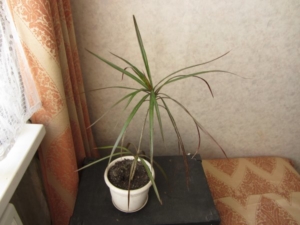
The factor influencing this problem is the wrong location of the flower. Most likely, the dracaena is very close to a cold or open window. Or the air temperature in the room is below 10 degrees. Dracaena can be saved by spraying the aboveground part with warm, settled water.
The plant sheds greens
This type of plant may have such a problem as shedding leaves. It occurs when the soil is overcooled in a pot or with too frequent watering. As a result, the root of the plant rots, leaves begin to fall off and the stem rots.
To prevent this problem, it is necessary to move the flower to a warmer place or make cuttings.
Spotting
When spots appear on the stem and leaves, you should pay attention to their size and color. And only then can you determine the reason for their appearance and how to help the plant:
- rounded light brown spots with dark stripes on the sides, indicate a fungal infection - alternaria;
- elongated brown dry spots on the aerial part - a sign of heterosporosis;
- dry spots of a chaotic shape with a green border, speak of a viral disease;
- pale small specks on the leaf plate warn of phyllostiktosis disease;
- wet spots with rot, having a brown tint, indicate the appearance of bacteriosis.
It is necessary to treat the plant for the above diseases by spraying with a fungicide that contains copper. And also treat dracaena with insecticidal preparations, which are also characteristic of a certain disease.
It is impossible to cure a plant affected by bacteriosis; it is best to destroy it so as not to infect healthy flowers.
Dry tips
The most common reason for the drying of the tips of the leaves in this plant is improper care of it. This could be:

- dry air in the room;
- the flower is irrigated incorrectly;
- excess light;
- damage by insect pests;
- the room air temperature does not meet the standards;
- lack of moisture, drought;
- insufficient amount of fertilizer and dressing;
- wrong location of the plant;
- improperly selected pot.

